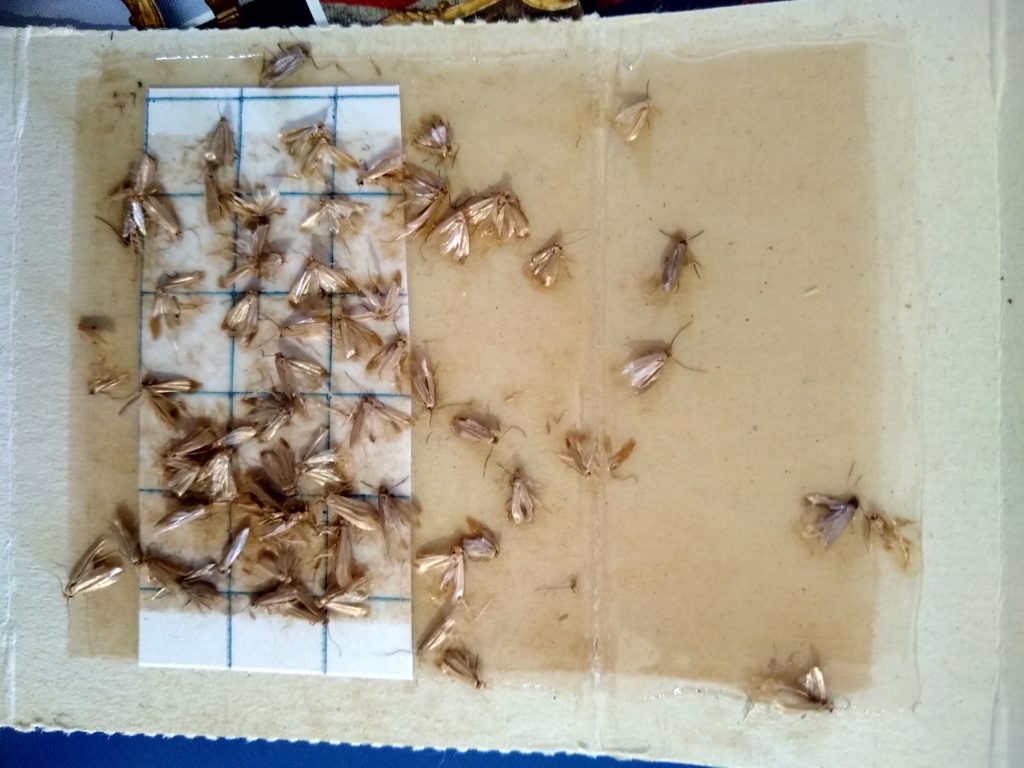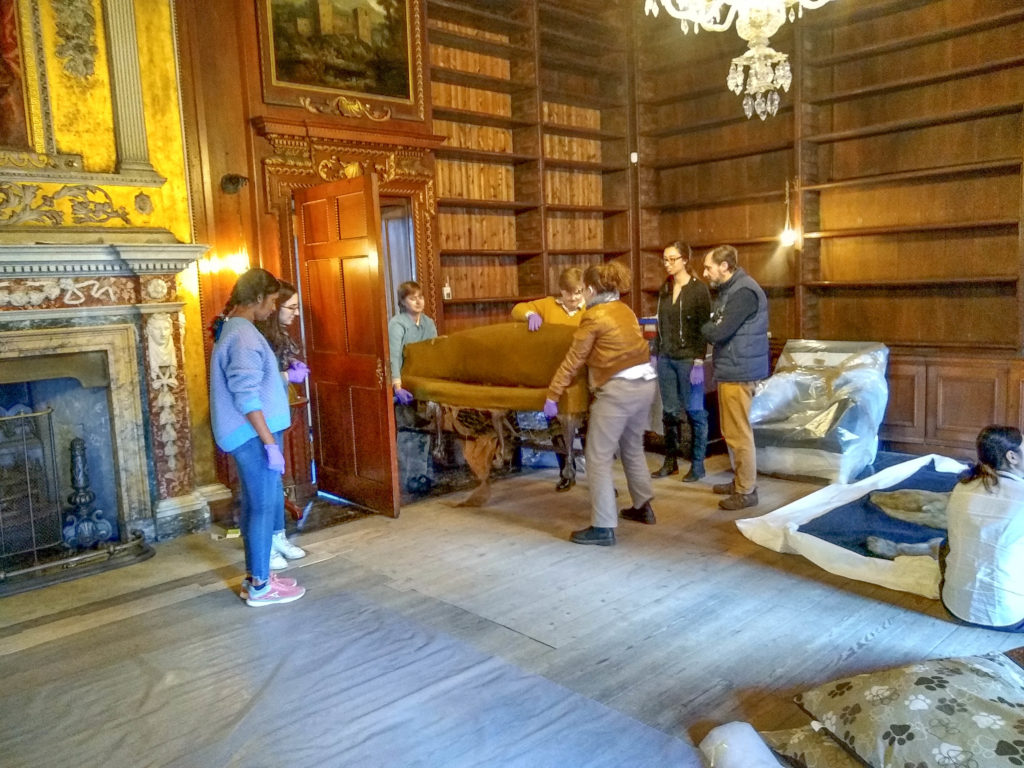
By Danica Auld, 1st year student, MPhil Textile Conservation.
A visit to the National Trust for Scotland (NTS) property, Newhailes House, was a great opportunity to integrate our learning from the Preventive Conservation course with professional practice. We experienced a day-long excursion of taught and practical sessions, addressing Integrated Pest Management (IPM) for typical pests one would expect to find in textile collections.

Mel Houston, Preventive Conservator for the NTS, guided us through all things pest-related, from what moths and beetles affect certain materials and tools for identifying them to strategies for protecting our collections from these pests. Mel’s knowledge and experience impressed on the class how important regular monitoring can be, showing us the resourcefulness of certain pests setting up home in the space between a piano leg and the carpet!
This introduction to the IPM strategies of the NTS led us into the current project at Newhailes House, addressing the 2016 webbing clothes moth explosion on the property: a mam-moth problem! The webbing clothes moth, or common clothes moth, commonly cause damage to textile collections as the larvae spin tunnel-shaped, silk webbing across objects and eat fibres as they go. While a certain amount of these moths is to be expected, 2016 saw a large increase in the amount of moths found in Newhailes’ pest traps. The important collection at Newhailes includes many clothes, carpets, upholstered furniture and curtains, exactly the type of food source these moths love, meaning an extensive project to tackle moth numbers had to begin before any serious damage occurred to the collection.

A pest trap showing increased moth numbers at Newhailes © University of Glasgow and with kind permission of the National Trust for Scotland
Arielle Juler, Bute/Icon Preventive Conservation Intern, explained the logistical issues behind the treatment program as all the objects in the house are sealed into polythene bags, taken into one of the shipping crate-sized industrial freezers outside and subjected to -35⁰C temperatures to kill any moths, eggs or larvae. While this is happening, every area of the house has to be cleaned to prevent any moths re-infesting the objects when they eventually return to the house.
After a tour of the house in the afternoon, the team at Newhailes guided the class through the preparation of a sofa and a bearskin for freezer treatment. We assessed the materials and condition of the objects, before planning the sealing and movement into the freezer. This proved a time-consuming process as the objects were large and awkward to navigate through the house and their condition needed consideration to ensure that no damage would occur during the treatment. The sofa raised discussion on how best to support the damaged seat where the springs, stuffing and fabric were dropping from the seat bottom. The bearskin presented a challenge in how to safely fold or roll the bearskin to prevent any damage to the claws or the fur. This exercise certainly gave us an appreciation of how problematic this process can be.


Our day at Newhailes was a fabulous, engaging way to combine theory and practice in a genuine, professional scenario. Many thanks must go to the staff at Newhailes for kindly sharing their knowledge with the next generation of conservators and for the opportunity to experience integrated pest management first-hand:
Mel Houston – National Preventive Conservator
Julie Bon – Regional Conservator
Arielle Juler – Bute/Icon Preventive Conservation Intern
Eleni Kolokytha – Newhailes Collections Care Assistant
Helen Knox – Visitor Services Supervisor
Mark McLean – Visitor Services Supervisor
All images taken by Dr Anita Quye, Convenor of the Preventive Conservation course.

